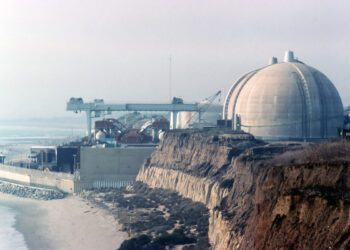Fighting spirit – Challenging times in the distillery sector
Whisky production in Scotland has a long history with roots as far back as 1494. The process used in distilleries today relies on tried, tested and trusted methods that have changed very little over 500 years. It’s only the scale of production that has really evolved. Modernisation offers opportunities to use better materials and automation, for example, but these must be carefully introduced so as not to adversely impact process safety or the product itself.

© Shutterstock
MANUFACTURING SPIRITS
The manufacturing process is well established. Barley is milled to produce grist and is added to a vessel called a mash tun, along with hot water, to extract sugars. The sugary fluid produced, called wort, along with yeast is transferred to another vessel called a wash back for fermentation, producing a beer-like solution (‘wash’) which has an 8% to 10% alcohol content.
The wash is distilled in a wash still to produce a spirit called low wines with a 25% alcohol content. The low wines is distilled in a spirit still to produce the final spirit at around 70% alcohol content. This spirit is added to barrels (casks) for maturation.
Manufacturing of gin also requires multiple distillation and the process is very similar.
PROCESS HAZARDS
The process hazards associated with distilled spirits manufacturing are well known and can result in a number of potential major incidents, including:
- Loss of containment from vessels, pipes or pumps leading to a pool fire, tank fire, flash fire or explosion.
- Overfilling due to human error and/ or protection system failure, and subsequent ignition of released fluid.
- Transfer pipework and road tanker loading or unloading failures.
- Domino effects of fire due to huge volumes stored at tank farms and warehouses.
- Releases into water courses via drains or contaminated firefighting water run-off.
Cask strength spirit at 70% alcohol by volume has a low flash point of 23°C. During the maturation process in warehouses, spirit is lost through the pores of the casks – ‘the angels’ share’. With warehouses storing millions of litres in thousands of casks the risk of ignition is very real.
Sixty years ago a fire occurred in the Cheapside Street bonded warehouse in Glasgow which held 21,000 barrels of whisky. The fire took a week to extinguish and claimed the lives of 19 fire service personnel.
More recently, in 2012, 100 firefighters were called to the scene of a massive fire at the Langley Distillery, producer of Langley’s Gin, based near Birmingham. Fortunately, no-one was killed or severely injured.
 |
| © Shutterstock |
MODERNISATION CHALLENGES
Modernisation in the form of new technologies and operating strategies has presented the industry with significant challenges to its tried and trusted practices of the past. The distillers’ goal is to introduce these new approaches without affecting the final product.
For example, changing mash tuns and washbacks from wooden structures to modern stainless steel – to reduce bacteria formation – can, and has, affected the spirit to the point where some distillery owners have reverted back to wood.
Distilleries attract huge numbers of tourists, over 2 million every year in Scotland alone, who want to see the process from start to finish along with the sights, the sounds and of course the tasting. Hiding all the equipment away behind process safety upgrades such as fire walls, blast walls, intrinsically safe enclosures and ATEX-rated cabinets must be carefully considered to ensure the distillery retains its essence and character, whilst still ensuring safety.
Most distilleries employ highly skilled personnel whose job is to smell the spirit – ‘to nose’ – to ensure that the batch being run today is the same as it has always been. The nose can detect changes that may have been introduced by a minor change in an ingredient, bacterial infection, changes in plant materials (wooden to stainless washback) or even if the cut of the spirit is taken at the wrong point.
Ill-conceived changes to the process can result in significant cost, product delays and reputational damage. Even changes to how the barrels are stored in warehouses can affect the final product. Good communication between distillers, designers and process safety specialists is essential; and when the distiller states that the change may affect the final product and the brand, then all must listen.
UK REGULATORY FRAMEWORK
In the UK, the industry is highly regulated for process safety and continues to learn lessons from incidents both within the distillery sector and from other process sectors, for example Buncefield and Texas City.
The COMAH Competent Authority together with the joint industry and regulators group, Process Safety Leadership Group (PSLG), provides an effective framework for improving safety in the industry. Sites are regularly visited by the Health and Safety Executive (HSE) and HM Revenue and Customs (HMRC), as well as environmental agencies, to assess levels of compliance with the main legal provisions, such as the Spirit Regulations, Customs and Excise Management.
FUNCTIONAL SAFETY
Distillery management ensures that its sites comply with regulation by applying process hazard and risk analysis to assess the initial design, operations and through life modifications.
Functional safety is of particular importance, largely driven by the introduction of automated control systems. The industry is well aware of the risks associated with manufacturing spirits and its containment standards specify safeguards that must be implemented, e.g. spring loaded manual drain valves, vessel overflow protection from multi-stage level control systems, and process control systems that ensure correct routing of the fluids at the various stages of the process.
The first step in functional safety, and indeed in any risk management process, is to identify the hazards. The HAZOP study technique is commonly used in the sector, allowing a structured approach to identify hazards, assess the safeguards and challenge the design.
The early design phase must also consider and identify areas where potential explosive atmospheres may occur, as required by the Dangerous Substances and Explosive Atmosphere Regulations (DSEAR), thus ensuring that properly rated equipment is specified and also that appropriate Hazardous Area Classification is applied.
Whilst many distilleries are located in low populated areas, others are adjacent to residential buildings and crowded places like sports stadia. Modelling the physical effects of major fires and external explosions is crucial to understanding the worst case impacts and ensuring the associated risks are acceptably low.
Scenarios with severe consequences are assessed using Layer of Protection Analysis (LOPA) to confirm an adequate level of defence in depth is in place, as well as determining the required Safety Integrity Level (SIL) for safety instrumented systems.
CONCLUSION
The distillery industry is modernising its long established processes to improve production efficiency and process safety. But change has to be very carefully managed to retain the quality and character of each whisky.








